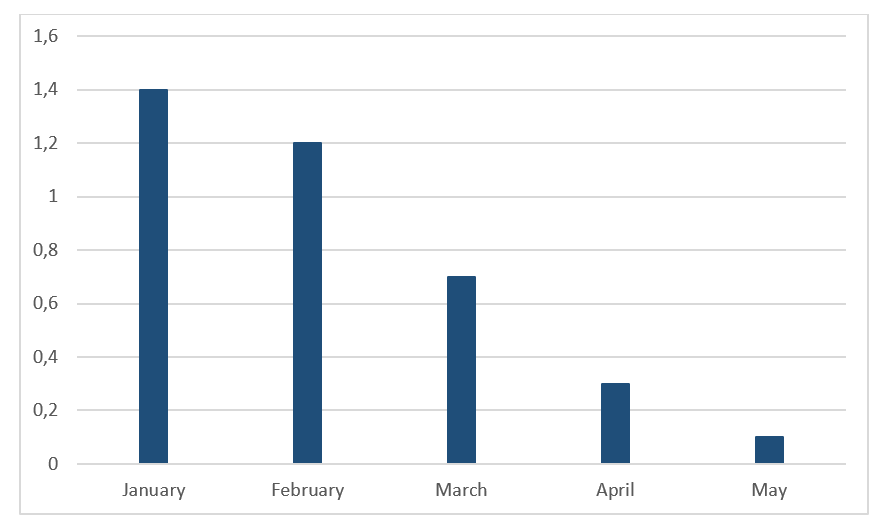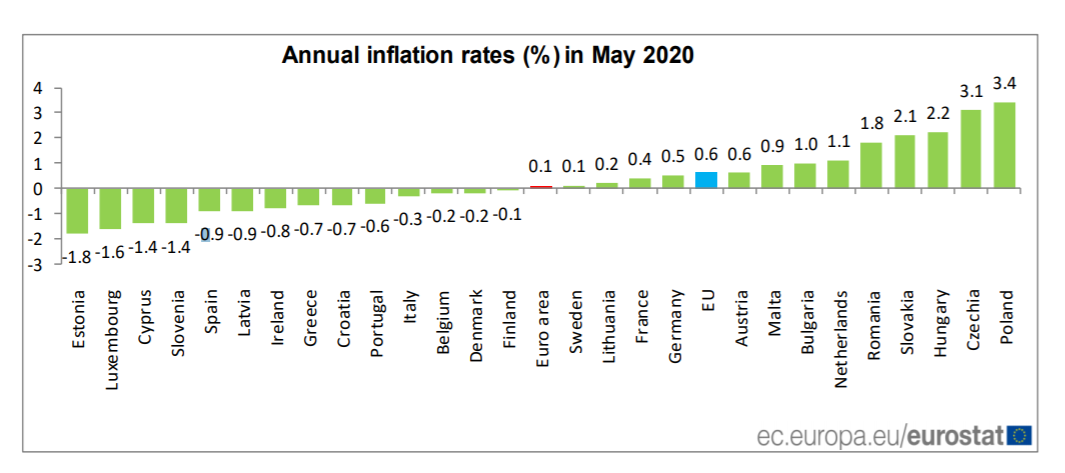The annual increase rate of the prices of consumer goods and services in the euro area has dropped to almost zero in May, which is the lowest it has been since 2016. The main reason behind this low inflation is the fall in energy prices.
According to the latest data of Eurostat, the statistical office of the European Union, published on Wednesday,
the euro area (including 19 European Union Member States) annual inflation rate was 0.1% in May, which marks a 0.2% drop compared to the previous month. Comparatively, this rate was 1.2% in 2019.
During the last five months, the increase rate of the prices of consumer goods and services changed in the following way: it was 1.4% in January, 1.2% in February, 0.7% in March, and 0.3% in April.

The euro area inflation rate was 1.4% without the energy prices, and the core inflation rate was 0.9% without the energy, food, alcohol, and tobacco prices.
In the EU Member States, consumer prices rose by 0.6% in May.
However, this still reflects a decreasing trend. In December 2019, the annual inflation rate in the EU was 1.6%, which stagnated until February, then it dropped to 1.2% in March and 0.6% in April.
“The lowest annual rates were registered in Estonia (-1.8%), Luxembourg (-1.6%), Cyprus and Slovenia (both -1.4%). The highest annual rates were recorded in Poland (3.4%), Czechia (3.1%), and Hungary (2.2%). Compared to April, annual inflation fell in twenty Member States, remained stable in two, and rose in five.”


The primary aim of the European Central Bank is to maintain price stability and keep inflation below 2% or close to this number. The annual inflation rate in the eurozone has not reached 2% since October 2018.
Visegrad group = higher inflation rate.